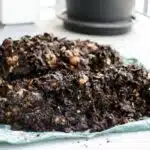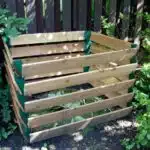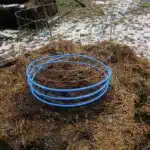Raking leaves is a seasonal task that many homeowners dread. However, it is important to keep up with this chore in order to maintain the health and appearance of your lawn and garden. The good news is that there are quick and easy ways to tackle leaf removal, while also benefiting the environment.
One of the most effective ways to quickly remove leaves is by using a leaf blower. This tool can make the task go much faster than traditional raking methods. Additionally, composting leaves can provide a natural source of fertilizer for your garden. With a little effort and some strategic planning, you can make leaf removal a breeze while also contributing to the health of your lawn and garden.
Understanding The Importance Of Leaf Removal
Leaf removal is an essential aspect of seasonal maintenance that goes a long way in ensuring the healthy growth of your garden. While the sight of colorful leaves on the ground may be appealing to many, they can cause major problems if left unattended. Leaves are not only unsightly but also act as breeding grounds for pests and diseases, which can spread quickly throughout your garden. As such, it is important to remove them regularly.
The benefits of leaf removal are numerous and far-reaching. For one, it helps to improve soil health by preventing the buildup of organic matter on the surface. This buildup can lead to soil compaction, which in turn affects water and nutrient absorption by plant roots. Additionally, leaf removal reduces the risk of fungal diseases such as powdery mildew from spreading from infected leaves to healthy ones.
Seasonal maintenance should always include leaf removal as a priority task. While it may seem like a daunting task at first glance, there are several easy methods you can employ to get rid of leaves quickly and efficiently. Choosing the right tools for the job is key in achieving this goal. In the next section, we will discuss some essential tools you need to have in your arsenal for a successful leaf-removal exercise.
Choosing The Right Tools For The Job
As a gardener, selecting the right tools for any job is crucial to achieving efficient and effective results. When it comes to raking leaves, having proper equipment can make all the difference in making the task quick and easy. It is important to choose a rake that suits your individual needs and preferences.
One factor to consider when selecting a rake is its size. A larger rake will cover more ground quickly, but may be too heavy or unwieldy for some people. A smaller rake may take longer to complete the task, but can be easier to handle. Additionally, you should consider the material of the rake’s tines. Metal tines are more durable than plastic ones, but may damage delicate lawns or gardens. On the other hand, plastic tines are gentler on surfaces but may not last as long.
In addition to a good rake, you should also invest in other tools such as leaf bags or bins for collecting the leaves after raking. These can make cleanup much more efficient and help prevent leaves from spreading back onto cleared areas due to wind or animals. By taking these factors into consideration and selecting proper equipment, you can ensure a smooth and enjoyable leaf-raking experience without unnecessary complications or frustrations.
As we continue our exploration of leaf-raking techniques, it is important to emphasize that safety must always come first when performing yard work. While selecting proper equipment is an important aspect of this process, there are additional precautions that must be taken in order to avoid injury or accidents during leaf-raking tasks. In our next section, we will discuss some key safety measures that every gardener should keep in mind while working with leaves and other garden debris.
Safety Precautions To Take
- It is important to wear gloves when raking leaves to protect the hands from blisters and abrasions.
- It is also important to wear protective eyewear to protect the eyes from dirt, debris, or dust that may be kicked up by the rake.
- Wearing protective gear such as gloves and eyewear when raking leaves is a necessary precaution to take for safety.
- For the quickest and easiest way to rake leaves, it is important to make sure the protective gear is properly fitted and secure.
Wear Gloves
Protecting hands is an essential safety measure to take before raking leaves. The process of raking can cause blisters, cuts, and scratches on the hands, which is why wearing gloves is crucial. A good pair of comfortable gloves will ensure that your hands are protected from any potential injuries while allowing you to work efficiently.
When selecting gloves for raking leaves, it’s important to consider their level of protection and comfort. Gloves made with thick materials such as leather or rubber provide the best protection against sharp objects like sticks and thorns. However, thick gloves may also make it difficult to grasp small leaves or twigs. On the other hand, lightweight gloves made with breathable fabric offer greater flexibility and comfort but may not provide as much protection.
Overall, protecting your hands should be a top priority when raking leaves. Choose a pair of comfortable gloves that fit well and provide adequate protection based on your specific needs. By taking this simple precaution, you’ll be able to enjoy the task of raking without worrying about potential hand injuries.
Wear Protective Eyewear
When it comes to raking leaves, taking safety precautions is crucial. While wearing gloves is essential for protecting your hands, another important safety measure that should not be overlooked is wearing protective eyewear. This simple precaution can prevent eye injuries caused by flying debris or exposure to harmful chemicals.
There are various types of protective eyewear available in the market, each with its own benefits. Safety glasses are a popular option for outdoor work as they are lightweight and comfortable to wear for extended periods. Goggles, on the other hand, provide more comprehensive protection as they cover a larger area around the eyes and prevent dust and debris from entering. It’s important to choose the right pair of protective eyewear based on your specific needs and comfort level.
When selecting protective eyewear for raking leaves, make sure that they fit well and provide adequate coverage around your eyes. Look for glasses or goggles with impact-resistant lenses made from materials like polycarbonate or acrylic that can withstand scratches and cracks. Additionally, consider purchasing a pair with anti-fog coating if you work in humid or wet conditions to maintain clear vision while working.
Protective eyewear is an essential safety precaution that should not be overlooked when raking leaves. By choosing the right pair of glasses or goggles, you can protect your eyes from flying debris or exposure to harmful chemicals while ensuring clear vision during work. Remember to prioritize comfort and proper fit when selecting protective eyewear for optimal protection.
Clearing Large Piles Of Leaves
Now that we have discussed the safety precautions to take while raking leaves, let us explore some leaf blower alternatives and composting large amounts of leaves.
Leaf blowers are often used to clear large piles of leaves quickly, but they can be noisy and emit harmful pollutants into the air. Instead, consider using a lawn vacuum or a rake with a tarp attached for easy transport. These methods may take longer than using a leaf blower, but they are more environmentally friendly and quieter.
Composting is an excellent way to dispose of large amounts of leaves while also providing your garden with rich nutrients. To create a compost pile, mix equal parts brown (dried leaves) and green (vegetable waste) materials in a designated area of your yard. Water the pile regularly, turn it occasionally, and in six months to one year, you will have nutrient-rich soil for your garden beds. Remember to avoid adding diseased or insect-infested leaves to the compost pile as they can spread disease throughout your garden.
As gardeners, it is important to consider the impact our actions have on the environment. By using alternative methods like rakes and lawn vacuums instead of leaf blowers, we can reduce harmful emissions while still effectively clearing our lawns of leaves. Additionally, composting provides us with an eco-friendly way to dispose of unwanted foliage while improving our gardens’ health. In the next section, we will explore how to clear leaves from flowerbeds and garden spaces without damaging plants or disturbing soil structure.
Clearing Leaves From Flowerbeds And Garden Spaces
Did you know that leaves can make up to 75% of your garden waste every fall season? This means that if left unattended, this organic matter can lead to nutrient depletion in your soil and create a breeding ground for pests and diseases. As a garden enthusiast, it is essential to find ways of clearing leaves from flowerbeds and garden spaces effectively.
Mulching leaves is an excellent way of recycling the organic matter back into your garden. By using a mulching mower or leaf shredder, you can chop the leaves into smaller pieces, which will decompose faster and enrich your soil with essential nutrients. Mulching also helps to retain moisture in the soil, suppress weed growth and reduce erosion.
If mulching isn’t an option for you, there are several leaf removal alternatives available. One alternative is to use a rake or leaf blower to gather the leaves into piles, which you can then put into compost bins or dispose of as green waste. Another alternative is to hire a professional landscaping service that specializes in yard cleanups.
Incorporating these techniques into your fall gardening routine will help keep your flowerbeds and garden spaces tidy while also promoting healthy plant growth. In our next section, we’ll discuss how using a leaf blower can save time and effort when clearing leaves from larger areas such as lawns and driveways.
Using A Leaf Blower
- When choosing a leaf blower, it is important to consider the size of the yard, the type of debris to be moved, and the desired power level.
- When operating a leaf blower, it is important to wear protective eye and ear gear, and to be aware of the wind direction in order to direct the debris away from people and pets.
- To maintain a leaf blower, the spark plugs, air filters, and engines should be regularly examined and cleaned, and the equipment should be stored in a dry, secure area.
- Additionally, fuel should be stored properly and checked for freshness before use.
- It is also important to follow the manufacturer’s instructions when assembling and disassembling the leaf blower.
- Regularly inspecting the fuel lines, hoses, and other components for any signs of damage is also recommended.
Choosing A Leaf Blower
When it comes to choosing a leaf blower, there are several factors to consider. One of the first things you need to decide is which power source you prefer. Corded leaf blowers are generally less expensive, but they have a limited range and require an electrical outlet nearby. On the other hand, cordless leaf blowers offer greater mobility and convenience, but they tend to be more expensive and may require frequent battery recharging.
Comparing corded and cordless leaf blowers can help you determine which one best suits your needs. If you have a small yard with minimal leaves or debris, a corded leaf blower may be sufficient. However, if you have a larger property or frequently deal with heavy fall foliage, a cordless leaf blower may be worth the investment for its increased power and mobility.
Ultimately, choosing the right leaf blower depends on your specific needs and preferences. Consider factors such as size of your property, amount of debris to be cleared, and budget when making your decision. With the right choice of equipment, raking leaves can become quick and easy task that will leave your lawn looking pristine in no time.
Operating A Leaf Blower
When it comes to clearing leaves and debris from your yard, using a leaf blower can be a quick and efficient option. However, it’s important to know how to properly operate the equipment to ensure its effectiveness and longevity. First, it’s crucial to select the right type of leaf blower for your needs, whether it be corded or cordless. Corded leaf blowers are generally less expensive but have limited range while cordless ones offer greater mobility and convenience.
Proper maintenance for leaf blowers is also essential for their optimal performance. This includes regularly cleaning the air filter, checking the spark plug and fuel lines, and ensuring that all parts are properly lubricated. Additionally, it’s important to use the correct fuel mixture for gas-powered leaf blowers and to charge batteries fully before use for cordless ones.
When operating a leaf blower, there are certain guidelines you should follow to maintain safety and effectiveness. Always wear eye protection and earplugs when using a leaf blower as they can produce loud noise levels. It’s also recommended to wear long pants, sturdy shoes, and gloves to protect against potential debris. Furthermore, be sure to direct the airflow away from people or animals as well as delicate plants or flowers in order to prevent damage or injury. By following these tips on selecting, maintaining, and operating a leaf blower properly, you can make yard work easier while keeping your equipment in top condition.
Maintaining A Leaf Blower
Maintaining a leaf blower is essential for its longevity and optimal performance. Regular upkeep ensures that the equipment continues to function effectively and efficiently. If you neglect maintenance, you may encounter issues with the leaf blower’s performance or even experience it breaking down entirely. When troubleshooting leaf blower issues, start by checking the air filter, spark plug, and fuel lines.
Cleaning the air filter regularly is crucial for proper airflow and preventing debris buildup. A clogged air filter can affect the performance of your leaf blower and reduce its lifespan. Spark plugs should also be checked regularly to ensure they’re in good condition. Damaged or worn spark plugs can cause your leaf blower to run inefficiently or not at all. Additionally, inspecting fuel lines for cracks or leaks helps prevent fuel leaks and fire hazards.
Proper lubrication is also necessary for maintaining a leaf blower’s optimal performance. Lubricate all moving parts regularly to prevent rust build-up and ensure that they move smoothly during operation. Lastly, store your leaf blower properly when not in use to protect it from damage caused by moisture or extreme temperatures. By following these simple steps for maintaining a leaf blower, you can keep your equipment running smoothly for years to come.
Bagging And Disposing Of Leaves
Once you have finished raking the leaves, it’s time to properly bag them up and dispose of them. Proper bagging techniques are important to ensure that the leaves do not spill out during transport or while waiting for pick-up. One technique is to use a tarp or large plastic sheet as a base for the bags. This will help prevent punctures from twigs or other debris, and also make it easier to move the bags around.
When it comes to disposing of leaves, there are several options. Many municipalities offer curbside pick-up services during the fall season, where they will collect bagged leaves along with other yard waste. However, if this service is not available in your area, you can take your bags of leaves to a local recycling center or composting facility. Composting benefits both the environment and your garden by creating nutrient-rich soil that can be used in future gardening projects.
Properly disposing of your leaves can be just as important as raking them up in the first place. By using proper bagging techniques and composting your leaves, you are not only keeping your yard clean but also contributing to a healthier environment. In the next section, we will explore how to create leaf compost – a simple yet effective way to put those fallen leaves to good use in your garden.
Creating Leaf Compost
Bagging and disposing of leaves is an essential task in maintaining a healthy garden. However, instead of throwing away those precious autumn leaves, you can turn them into valuable compost. Composting is not only eco-friendly but it also provides numerous benefits to your garden.
Benefits of composting include improving soil structure and fertility, increasing water retention, and reducing the need for chemical fertilizers. It also promotes healthy root growth and helps control soil erosion. Composting is an easy process that involves breaking down organic matter such as leaves, grass clippings, and kitchen waste into nutrient-rich soil.
There are various composting techniques available depending on your needs and space availability. The most common method is pile composting where you simply form a heap of organic materials in a corner of your garden or in a bin. Another technique is vermicomposting where worms are used to break down the organic matter faster. Whichever method you choose, make sure to turn the pile regularly to aerate it and add water when necessary.
Now that you have created leaf compost, it’s time to use it in your garden. Adding leaf mulch to your garden beds helps retain moisture in the soil while suppressing weed growth at the same time. Spread a thin layer of compost over your garden beds or mix it with potting soil for potted plants. With these simple steps, you can turn those piles of fallen leaves into nutritious soil for your plants’ growth.
Adding Leaf Mulch To Your Garden
As a gardener, you know that the key to maintaining a healthy garden is by adding organic matter to your soil. One of the best ways to do this is by incorporating leaf mulch into your garden beds. Leaf mulch is simply the decomposed leaves that have fallen from trees in autumn, which can help improve soil structure and fertility. It’s also an excellent way to recycle yard waste and reduce landfill waste.
The benefits of mulching with leaf litter are numerous. For one, it helps retain moisture in the soil, preventing it from drying out during hot summer months. Additionally, it suppresses weed growth, reducing maintenance time and costs. Mulching can also protect plant roots from extreme temperatures and reduce soil erosion caused by heavy rainfall or wind.
There are different types of mulch, including wood chips and grass clippings, but leaf mulch is one of the most readily available options for most home gardeners. As leaves fall naturally in autumn, they can be easily collected and piled up in a designated area to decompose over time. Alternatively, they can be shredded using a mower or leaf vacuum to speed up decomposition. Once broken down into smaller pieces, they can be spread evenly throughout garden beds as needed.
Using leaf litter as winter protection for your garden is another practical use for this natural material. Layering leaves on top of flower beds or vegetable patches before winter sets in can help insulate plants against harsh weather conditions such as frost or snow. This technique also helps prevent soil erosion and provides shelter for beneficial insects that may overwinter in your garden beds.
Using Leaves As Winter Protection For Your Garden
If you’re looking for a way to protect your garden during the winter months, look no further than the fallen leaves in your yard. Winter gardening can be a challenge, but using leaves as insulation is a simple and effective solution. By covering your garden beds with a layer of leaves, you can help protect your plants from cold temperatures and frost.
To use leaves as insulation, simply rake them up into piles and spread them over your garden beds. Make sure the layer of leaves is at least six inches thick to provide adequate protection. You can also use shredded leaves or leaf mulch for added insulation. Not only will this protect your plants from the cold, but it will also help retain moisture in the soil.
Here are four benefits of using leaves as winter protection for your garden:
- Free: Leaves are readily available in most yards and neighborhoods.
- Eco-friendly: Using fallen leaves is an environmentally friendly alternative to synthetic materials.
- Insulation: Leaves provide excellent insulation for plants during the winter months.
- Soil health: As the leaves decompose, they add organic matter to the soil, improving its health and fertility.
Using leaves as insulation is just one way to make the most of fall’s bounty in your garden. In the next section, we’ll explore another use for those fallen leaves: using them as animal bedding. By repurposing these natural materials in creative ways, you can reduce waste while providing valuable resources for yourself and others.
Using Leaves As Animal Bedding
- Using leaves as animal bedding can provide a variety of health benefits to animals, both physically and psychologically.
- The natural scent of the leaves can provide a calming effect for animals, as well as a softer, more comfortable resting surface than hard or manufactured bedding materials.
- Leaves can help absorb moisture and odors, and provide extra warmth during colder months.
- Raking leaves quickly and easily is important to ensure animals have a clean and comfortable place to rest, and can be achieved by using a leaf blower or rake.
Animal Benefits
Keeping animals in shelters or wildlife habitats requires proper bedding to ensure their comfort and health. One cost-effective and eco-friendly option is to use leaves as animal bedding. Not only does it reduce waste by repurposing fallen leaves, but it also provides numerous benefits for the animals.
Firstly, using leaves as animal bedding promotes a comfortable and cozy environment for the animals. The natural insulation properties of leaves help to regulate temperature and humidity levels, creating a warm and dry space for them to rest. Moreover, the cushioning effect of the leaves minimizes the risk of injury from hard surfaces.
Secondly, using leaves as animal bedding can also have positive effects on their health. Leaves contain natural compounds that possess antibacterial properties, which can help prevent bacterial infections in animals. Additionally, the decomposing process of leaves releases nutrients into the soil, which can reduce harmful ammonia levels in animal habitats.
In conclusion, incorporating leaf litter into animal shelters or wildlife habitats is beneficial both for the animals and the environment. By providing a comfortable and healthy living space for them, it contributes to their overall well-being and longevity. Furthermore, it serves as a sustainable practice that conserves resources while minimizing waste.
Health Benefits
Using leaves as animal bedding not only provides a comfortable environment for animals, but it also offers numerous health benefits. Leaves contain natural compounds that possess antibacterial properties that can help prevent bacterial infections in animals. This is particularly important in wildlife habitats, where animals may be exposed to various pathogens.
Furthermore, the decomposing process of leaves releases nutrients into the soil, which can reduce harmful ammonia levels in animal habitats. Ammonia buildup can lead to respiratory problems and other health issues for animals, so using leaves as bedding can help mitigate these risks. Additionally, leaf litter can provide a natural source of enrichment for animals by encouraging natural behaviors such as foraging and digging.
While there are many benefits to using leaves as animal bedding, there are also some disadvantages to consider. For example, certain types of leaves may contain toxins or allergens that could harm some animals. It is important to do research and consult with experts before choosing which type of leaf litter to use in animal habitats.
Overall, incorporating leaf litter into animal shelters or wildlife habitats offers numerous benefits for both the animals and the environment. By providing a healthy living space for them while promoting natural behaviors and conserving resources, this practice can contribute significantly to their overall well-being and longevity.
Donating Leaves To Community Gardens Or Composting Facilities
One of the best ways to put your leaf piles to good use is by donating them to community gardens or composting facilities. Not only does this have a positive impact on the environment, but it also benefits the community as well.
Community gardens rely on donations from local residents and businesses to maintain their plots. Fallen leaves are an excellent source of organic matter that can be used to enrich soil and improve plant growth. By donating your leaves, you are helping these gardens flourish and providing fresh produce for those in need.
Composting facilities also benefit greatly from leaf donations. Leaves make up a significant portion of compostable materials, and they provide numerous benefits for the environment such as reducing landfill waste, reducing greenhouse gas emissions, and improving soil quality. By donating your leaves to a composting facility, you are contributing to a sustainable future for our planet.
Tips For Efficient And Effective Leaf Removal
Efficient raking techniques are essential for effective leaf removal. To begin with, it is important to choose the right time of day to rake leaves. Early morning or late afternoon when the sun is not too hot is ideal as it helps you avoid exhaustion and dehydration. Additionally, starting at the far end of your yard and working towards your house also saves time and energy.
Another way to make leaf removal more efficient is by using the correct tools. A lightweight rake with a wide head makes quick work of large areas while a leaf blower can be used for hard-to-reach spots like corners and under bushes. In addition, if you have a large yard, consider investing in a lawn vacuum that will help you get rid of leaves quickly and efficiently.
Leaf disposal options are also an important consideration when removing leaves from your garden. Burning leaves produces harmful emissions and is illegal in some areas, so it’s best to avoid this method altogether. Instead, composting or mulching leaves can provide valuable nutrients for your garden soil while reducing waste. Alternatively, check with your local government to see if they offer leaf pick-up services or drop-off locations.
Reducing your environmental impact when removing leaves from your garden is an important step in maintaining a healthy ecosystem. In the next section, we will explore eco-friendly methods for disposing of leaves that not only benefit your garden but also contribute positively to the environment around us.
Reducing Your Environmental Impact
Leaves can be reused in gardens as a mulch, providing a layer of protection for the soil and reducing the amount of water lost through evaporation. Composting leaves can also be beneficial for gardens, as the leaves will decompose and release their nutrients into the soil. Mulching leaves can improve soil fertility, reduce the need for weeding, and help to control pests. Natural composting of leaves is the most environmentally friendly option, as it eliminates the need for artificial fertilizers.
Reusing Leaves
Creative uses of fallen leaves are an excellent way to reduce your environmental impact while providing multiple benefits to your garden. Instead of raking up and discarding these leaves, consider reusing them in sustainable practices. One such technique is leaf mulching, where the leaves are shredded and then spread over the soil as a protective layer. This not only provides insulation for plant roots during harsh winter months but also enhances soil health by adding nutrients.
Another creative use of leaves is composting. Turning leaves into compost is a natural process that breaks down organic matter into nutrient-rich soil. Composting can be done in a variety of ways, including using specialized bins or simply creating a pile in a corner of your yard. The finished compost can then be used as fertilizer for plants, promoting healthy growth while reducing waste.
Fallen leaves can also be used for decorative purposes in sustainable practices such as leaf crafts. From wreaths to garlands to seasonal centerpieces, there are plenty of creative ways to incorporate fallen leaves into your home decor while reducing your environmental impact. These crafts not only provide aesthetic appeal but also give new life to something that would otherwise go to waste.
Overall, creative uses of fallen leaves provide an excellent opportunity to reduce waste and promote sustainability in your garden and home. By implementing techniques such as leaf mulching, composting, and leaf crafts, you can add value to something that was once considered garbage while simultaneously supporting a healthier environment.
Composting Leaves
Composting leaves is one of the best ways to reduce your environmental impact while improving soil health. The process of composting breaks down organic matter, including fallen leaves, into nutrient-rich soil that can be used as fertilizer for plants. Composting offers a range of benefits, including reducing waste and carbon emissions, conserving water, and promoting healthy plant growth.
To begin composting leaves, it is essential to choose the best composting methods that suit your needs and available resources. One method involves creating a pile in a corner of your yard and adding layers of brown materials such as dried leaves and green materials such as kitchen scraps or grass clippings. Another option is using specialized composting bins that provide optimal conditions for breaking down organic matter efficiently.
The benefits of composting are numerous. It reduces waste by diverting organic matter from landfills, where it would otherwise produce methane gas, a potent greenhouse gas. Composting also conserves water by improving soil structure, which increases its ability to retain moisture. Additionally, the nutrient-rich soil produced through composting enhances plant growth while reducing the need for chemical fertilizers. By incorporating composting into your sustainable practices, you can reduce your environmental impact while promoting healthier gardens and landscapes.
Making Leaf Removal A Breeze
Reducing your environmental impact is a noble goal, but it doesn’t have to come at the expense of efficiency. When it comes to leaf removal, there are two tools that can make the job quick and easy: the leaf blower and the leaf vacuum.
The leaf blower is a powerful tool that can quickly clear leaves from large areas. It works by blowing air out of a nozzle, which moves the leaves across the ground in a controlled direction. This makes it easy to pile up leaves in one spot for easy disposal. However, it’s important to note that leaf blowers can be noisy and may not be suitable for use in residential neighborhoods or areas with noise restrictions.
Alternatively, the leaf vacuum is a quieter option that allows you to suck up leaves into a bag attached to the machine. This makes it easy to collect leaves without having to pile them up first. Leaf vacuums are also great for cleaning up small or hard-to-reach areas where a leaf blower may not be effective.
Incorporating either of these tools into your leaf removal routine can save you time and effort while still being mindful of your environmental impact. By choosing an efficient method for removing leaves, you’ll have more time to spend on other tasks or enjoying your garden space. So whether you opt for a leaf blower or a leaf vacuum, both will make your life easier during this autumn season.
Conclusion
Leaf removal is an important aspect of maintaining a healthy garden or lawn. By removing leaves, you prevent the buildup of debris that can attract pests and promote the growth of fungi and bacteria. Choosing the right tools for the job is essential, as is taking safety precautions to avoid injury while working with sharp tools.
Clearing large piles of leaves can be time-consuming, but there are techniques that can make it easier and more efficient. Similarly, clearing leaves from flowerbeds and garden spaces requires careful attention to detail to avoid damaging delicate plants or disturbing the soil. Donating leaves to community gardens or composting facilities is a great way to reduce waste and promote sustainable gardening practices.
By following these tips for efficient and effective leaf removal, you can make this chore less daunting and more enjoyable. Furthermore, by reducing your environmental impact through sustainable practices like composting or donating leaves, you can contribute to a healthier ecosystem in your community. Making leaf removal a breeze may take some practice, but with patience and diligence, anyone can become an expert in this essential aspect of gardening. As they say, “a well-tended garden is a reflection of a well-tended soul.”
Image Credits
- “Day 264: Raking the Leaves” by -Snugg- (featured)





























